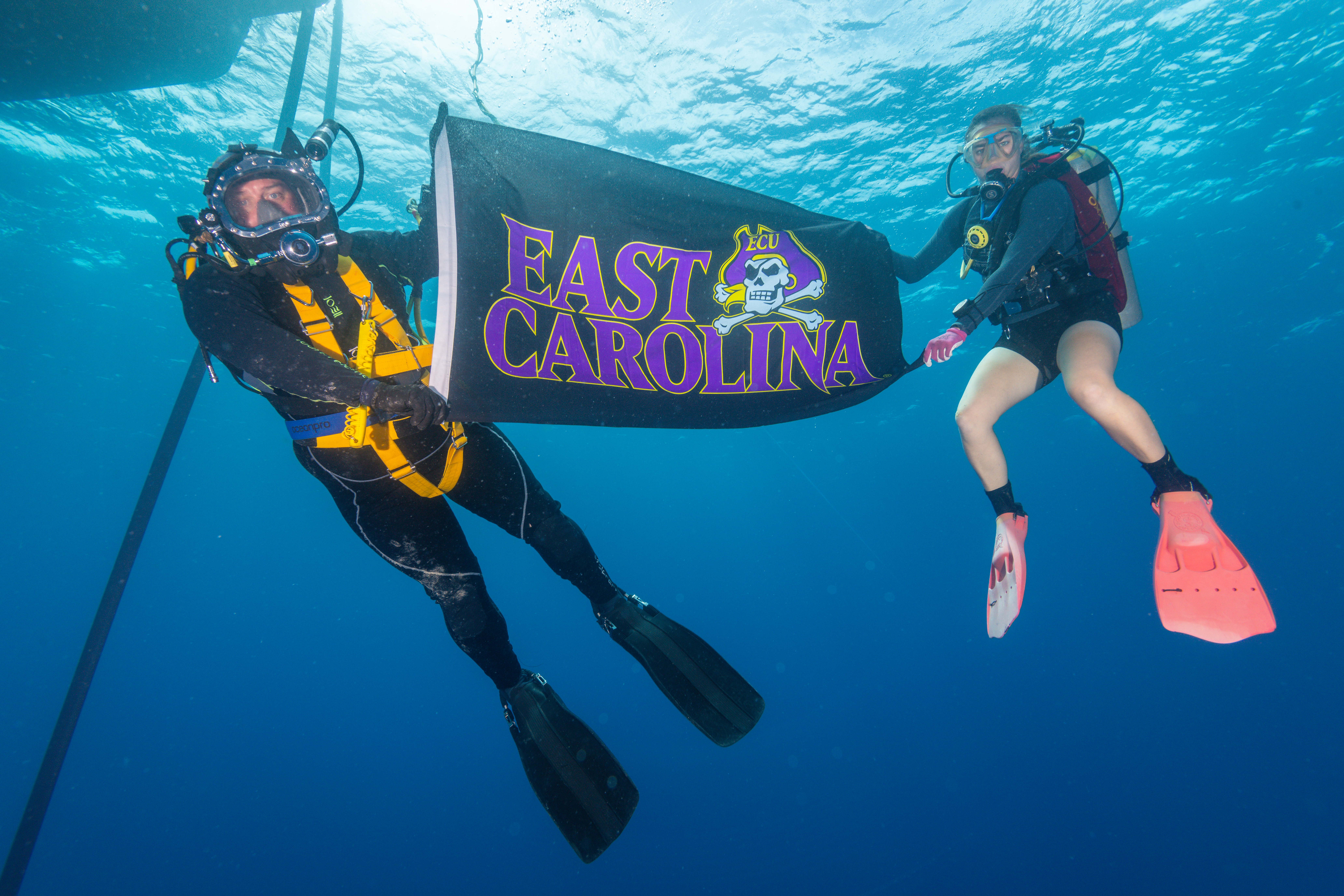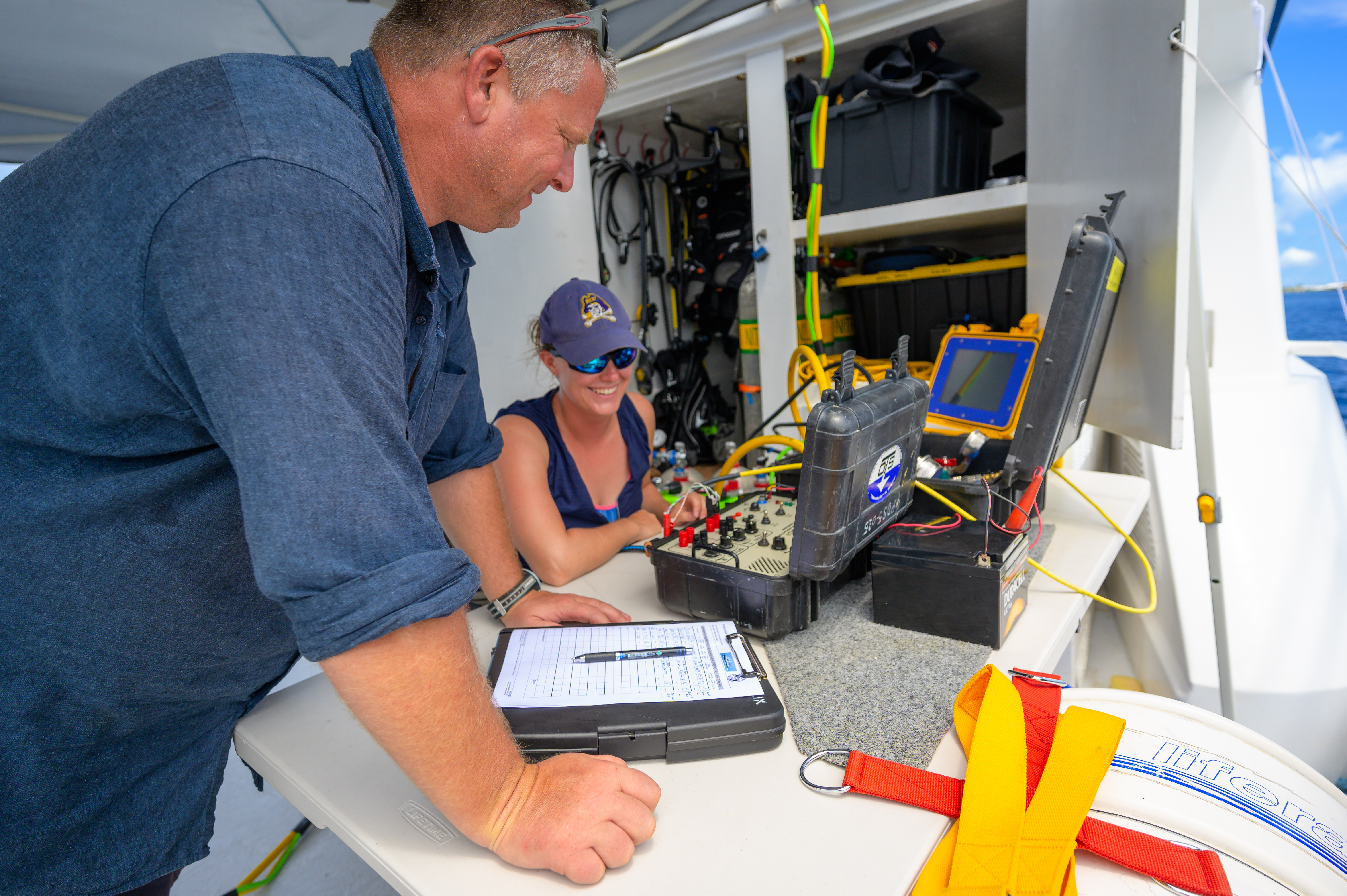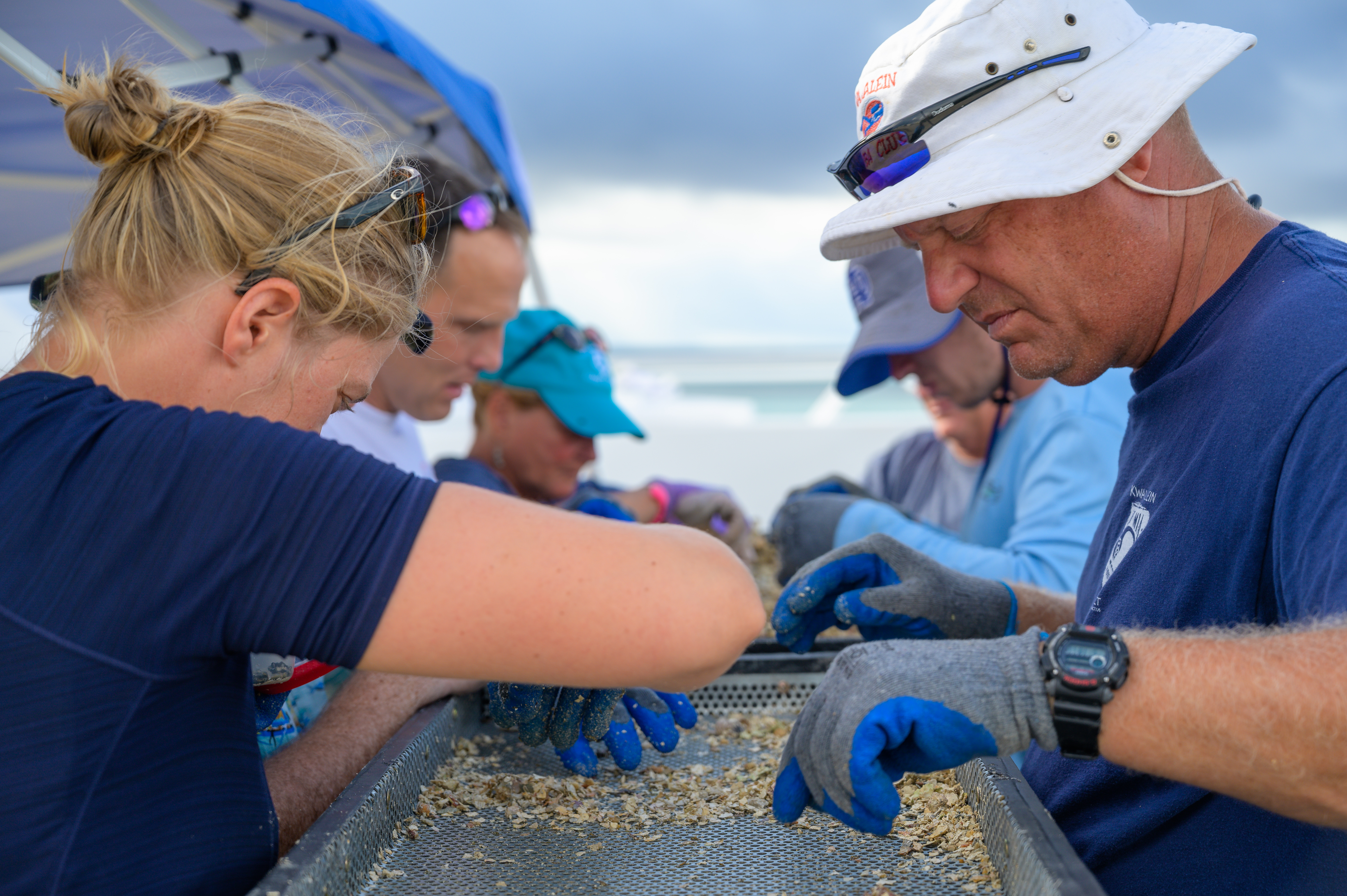War & Warmth … A Pacific Adventure
By Allyson Ropp, Lighthouse Archaeological Maritime Program
Every time I travel to see family, the first question I receive is, “Where did you go now?” This is one of the best questions that I receive and luckily this last archaeological adventure took me back to the Pacific to work on a cultural heritage project related to World War II (WWII).

The Marshall Islands team was led by archaeologists from East Carolina University. PDS Diver Jason Blackwell and Allyson Ropp are shown holiding the East Carolina University Flag underwater in the Marshall Islands. All photos by John McCord, 2019
This past September and October, I accompanied an interdisciplinary team to Kwajalein Atoll in the Republic of the Marshall Islands to conduct a site investigation connected to WWII. Working in conjunction with the Defense POW/MIA Accounting Agency (DPAA), the team was led by archaeologists from East Carolina University and consisted of archaeologists and divers from the Bureau of Ocean Energy Management, the ECU Coastal Studies Institute, Professional Diving Services from Australia, and me from the St. Augustine Lighthouse Archaeological Maritime Program.
For those of you that do not know, the Marshall Islands is a county made up of numerous atolls situated near the equator in the Pacific Ocean. The first known Micronesian colonists arrived around the 2nd millennium BC and cultures there flourished from that point. It was not until Ferdinand Magellan sighted the atolls in the 1520s that the Marshalls became known to Europeans. The islands were initially claimed by the Spanish in the 1590s, but the Germans took control of part of the chain in the 1880s. This custody lasted until post-World War I when Japan occupied the islands as part of the South Pacific Mandate granted by the League of Nations.

Allyson Ropp and PDS Dive Supervisor Malcolm Ventouroni working on a maritime archaeology project in the Marshall Islands.
The Marshall Islands are most well known for their role in World War II and subsequent nuclear testing. Following the attack on Pearl Harbor, the Japanese held most of the islands of the Pacific. After the Battle of the Coral Sea in May 1942 and the Battle of Midway in June 1942, American forces slowly gained ground and pushed their way through the island chains of the Pacific, including occupying the Marshall Islands in February 1944. When the war ended, the U.S. retained occupancy of the Marshall Islands. In 1946, nuclear testing commenced on Bikini and Eniwetok Atolls. Between 1946 and 1958, the U.S. conducted 67 weapon tests, including the world’s first hydrogen bomb “Mike,” on Bikini. Although located hundreds of miles away from the impact areas, Kwajalein transformed into a base of operations for nuclear testing during this period. Based on its strategic position, the atoll later became a missile defense station.

Local volunteers the archaeology project team search through dredge spoil in the Marshall Islands.
This was the environment the team was brought into! And it was fitting for our mission. With support of the U.S. Army Garrison Kwajalein Atoll and the Kwajalein MIA Project, we launched our DPAA partner mission, to help in their overall goal of providing the fullest possible accounting of missing U.S. personnel to their families and the nation. Over the course of three-weeks, we conducted twelve days of investigations, all while experiencing amazing hospitality on the island. The best part by far, beyond the incredible site and team, was naturally the water. It was a balmy 89° from top to bottom with typically 100’ visibility every day. Much different than what I experience here in St. Augustine.
But this was more than just an adventure to do archaeology in an exotic location and dive in warm, clear water. It was about memory and providing aid to DPAA and their mission of closure for families affected by war. It was an honor to work with this organization and the incredible international team assembled for the project in such an exotic part of the world!

